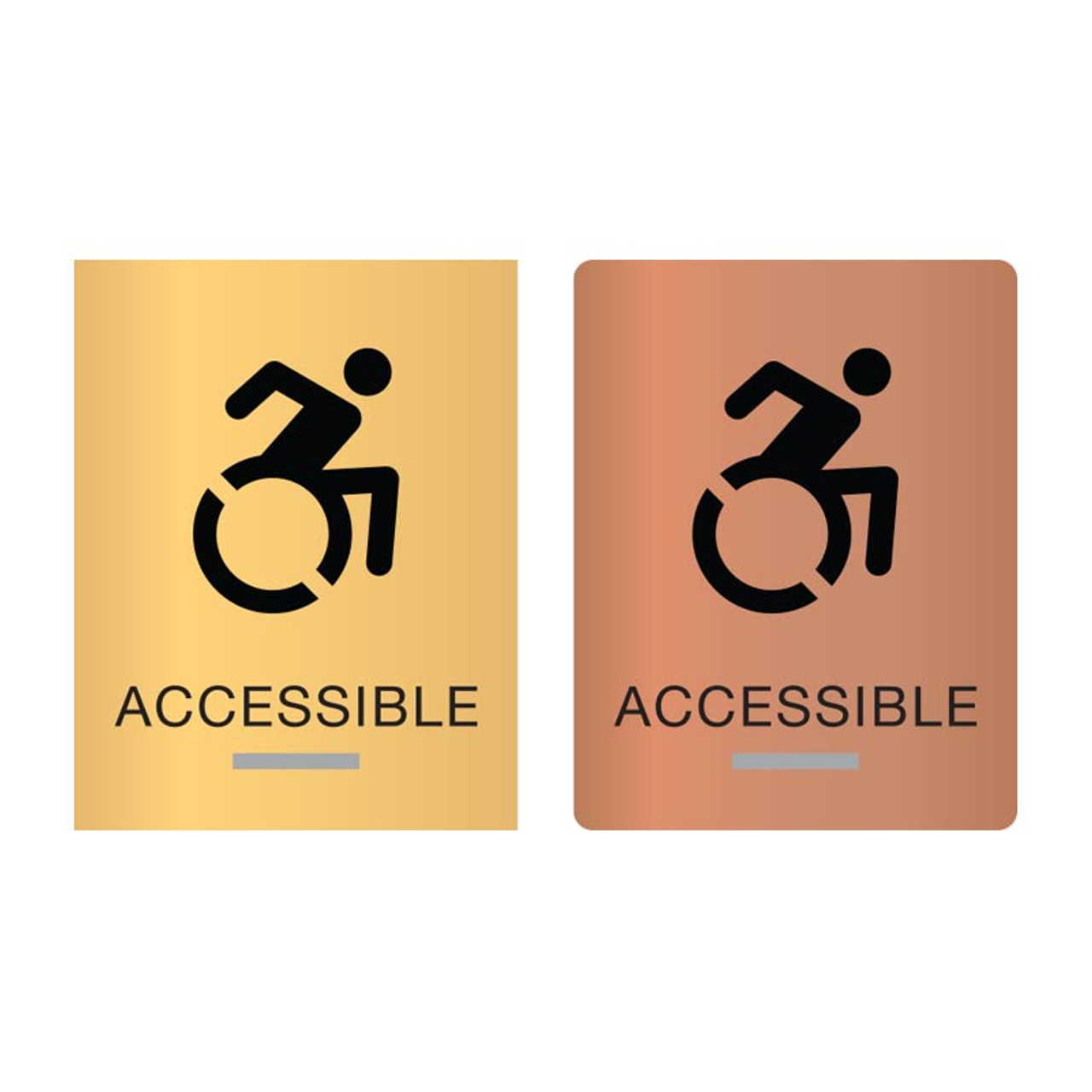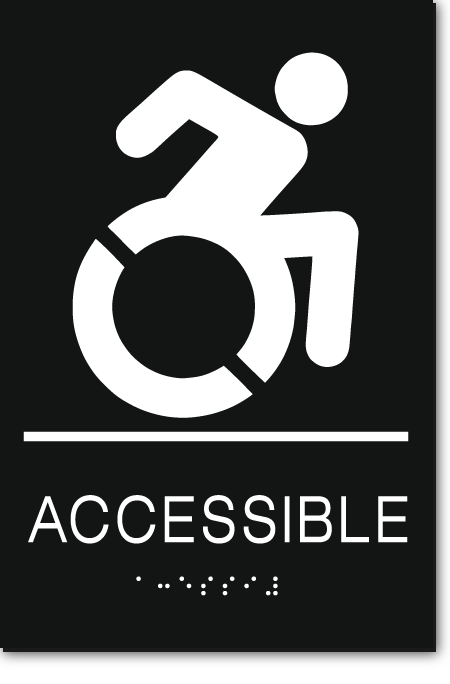Discovering the Key Attributes of ADA Indicators for Boosted Access
In the realm of availability, ADA signs serve as quiet yet effective allies, guaranteeing that rooms are navigable and comprehensive for individuals with disabilities. By integrating Braille and responsive elements, these indications damage barriers for the aesthetically damaged, while high-contrast color plans and clear font styles provide to diverse visual demands.
Significance of ADA Compliance
Guaranteeing conformity with the Americans with Disabilities Act (ADA) is important for fostering inclusivity and equivalent access in public rooms and offices. The ADA, passed in 1990, mandates that all public centers, companies, and transport services accommodate individuals with disabilities, ensuring they enjoy the exact same civil liberties and chances as others. Compliance with ADA criteria not just fulfills legal obligations yet likewise improves an organization's online reputation by demonstrating its dedication to variety and inclusivity.
One of the crucial elements of ADA compliance is the application of available signs. ADA signs are made to ensure that individuals with specials needs can conveniently browse with buildings and rooms. These signs need to adhere to certain guidelines regarding size, font, color contrast, and placement to assure visibility and readability for all. Correctly carried out ADA signage aids eliminate obstacles that people with disabilities often encounter, thus advertising their self-reliance and confidence (ADA Signs).
Furthermore, sticking to ADA laws can minimize the risk of potential penalties and legal repercussions. Organizations that fail to abide by ADA standards might encounter lawsuits or penalties, which can be both financially troublesome and harmful to their public image. Hence, ADA compliance is important to promoting an equitable setting for everyone.
Braille and Tactile Aspects
The consolidation of Braille and responsive aspects into ADA signs personifies the principles of ease of access and inclusivity. It is typically put under the equivalent message on signs to ensure that people can access the details without aesthetic aid.
Tactile aspects extend beyond Braille and consist of elevated symbols and personalities. These parts are created to be discernible by touch, enabling individuals to identify room numbers, restrooms, leaves, and various other critical locations. The ADA establishes particular guidelines regarding the dimension, spacing, and positioning of these responsive elements to optimize readability and make sure uniformity throughout various atmospheres.

High-Contrast Color Design
High-contrast color pattern play a critical function in enhancing the presence and readability of ADA signage for people with visual impairments. These schemes are crucial as they make best use of the distinction in light reflectance in between text and background, making sure that signs are conveniently discernible, even from a distance. The Americans with Disabilities Act (ADA) mandates using details color contrasts to fit those with limited vision, making it a vital element of compliance.
The effectiveness of high-contrast shades lies in their capability to stand out in numerous lighting problems, consisting of dimly lit atmospheres and locations with glow. Generally, dark message on a light background or light text on a dark background is used to achieve ideal comparison. For example, black text on a yellow or white background supplies a raw visual difference that helps in quick acknowledgment and understanding.

Legible Fonts and Text Size
When thinking about the layout of ADA signs, the selection of understandable typefaces and suitable message size can not be overstated. These elements are essential for making sure that indications come to people have a peek here with aesthetic impairments. The Americans with Disabilities Act (ADA) mandates that font styles have to be sans-serif and not italic, oblique, script, highly attractive, or of unusual type. These needs help make sure that the message is easily understandable from a distance and that the characters are appreciable to diverse audiences.
The dimension of the message likewise plays an essential function in ease of access. According to ADA standards, the minimal message height must be 5/8 inch, and it needs to enhance proportionally with watching range. This is particularly important in public areas where signage needs to be reviewed promptly and precisely. Uniformity in text dimension adds to a cohesive aesthetic experience, aiding individuals in navigating settings successfully.
In addition, spacing between lines and letters is important to legibility. Ample spacing protects against characters from showing up crowded, enhancing readability. By adhering to these standards, developers can significantly boost ease of access, making certain that signage serves its intended objective for all people, no matter of their visual capabilities.
Effective Positioning Methods
Strategic positioning of ADA signs is important for taking full advantage of accessibility and guaranteeing conformity with legal requirements. Appropriately located indications assist individuals with handicaps properly, helping with navigation in public areas. Secret considerations include elevation, presence, and closeness. ADA standards specify that indications should be placed at an elevation in between 48 to 60 inches from the ground to ensure they are within the line of sight for both standing and seated individuals. This typical elevation variety is critical for inclusivity, allowing wheelchair customers and individuals of varying elevations to gain access to info effortlessly.
Furthermore, signs should be positioned beside the lock side of doors to enable easy recognition prior to entry. This positioning assists individuals locate areas and areas without obstruction. In instances where there is no door, signs need to be positioned on the nearest surrounding wall surface. Uniformity in indication placement throughout a center enhances predictability, reducing complication and improving general individual experience.

Final Thought
ADA indications play a vital role in promoting accessibility by integrating features that address the needs of individuals with impairments. These elements collectively foster a comprehensive setting, emphasizing the relevance of ADA conformity in making sure equal gain access to for all.
In the realm of accessibility, ADA indicators offer as quiet yet powerful allies, ensuring that spaces are inclusive and navigable for people with specials needs. The ADA, passed in 1990, mandates that all public facilities, companies, and transport services accommodate people with impairments, ensuring they appreciate the exact same rights and opportunities as others. ADA Signs. ADA indications are developed to make certain that people with specials needs can conveniently browse with spaces and structures. ADA guidelines stipulate that indicators must be mounted at an elevation between 48 to 60 inches from the ground to guarantee they are investigate this site within the line of sight for both standing and seated individuals.ADA indicators play a crucial role in advertising ease of access by incorporating functions that address the requirements of individuals with specials needs
Comments on “Personalizing ADA Signs to Meet Your Specific Needs”